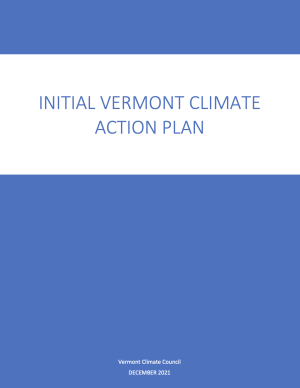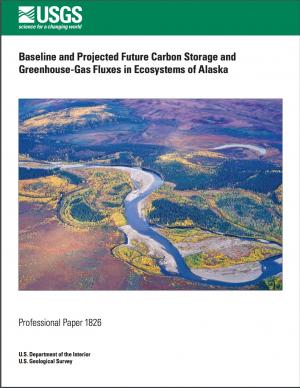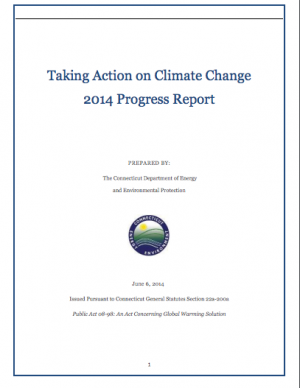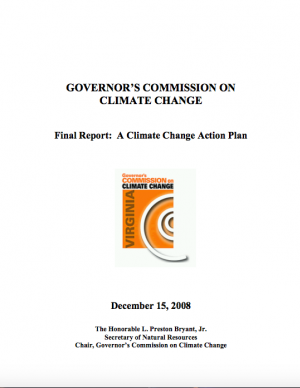Access a range of climate-related reports issued by government agencies and scientific organizations. Browse the reports listed below, or filter by scope, content, or focus in the boxes above. To expand your results, click the Clear Filters link.
The Vermont Climate Action Plan aims to dramatically reduce greenhouse gas emissions, help protect Vermont communities and landscapes from the greatest risks of climate change, and create new clean energy industry and jobs. The Climate Action Plan includes strategies to:
- Reduce greenhouse gas emissions from the transportation, building, regulated utility, industrial, commercial, and agricultural sectors;
- Encourage smart growth and related strategies;
- Achieve long-term sequestration and storage of carbon and promote best management practices to achieve climate mitigation, adaption, and resilience on natural working lands;
- Achieve net zero emissions by 2050 across all sectors;
- Reduce energy burdens for rural and marginalized communities;
- Limit the use of chemicals, substances, or products that contribute to climate change; and
- Build and encourage climate adaptation and resilience of Vermont communities and natural systems.
The Climate Action Plan serves as a guide for the Vermont Legislature in setting policy that supports climate change solutions for Vermonters and Vermont's landscape.
A range of resources documenting report preparation are available in the Climate Action Plan Appendices.
The Central Council of the Tlingit and Haida Indian Tribes of Alaska (Tlingit & Haida) is a federally recognized Indian Tribe that serves 20 villages and communities stretching over 43,000 square miles within the Alaska Panhandle. The Tlingit and Haida membership is among the largest, most isolated, and most geographically dispersed of Native or Tribal populations nationwide. The region encompasses a 525-mile strip of coastline and interior waterways, bordered by Canada on the north, south, and east, with the Gulf of Alaska on the west.
The Central Council recognizes that wild salmon, berries, clams, herring, halibut, yellow cedar and other species important for subsistence, cash and culture are at risk. In response, they have released a 53-page climate change adaptation plan. The document is a roadmap for prioritizing, monitoring, and responding to threats stemming from warming air and ocean temperatures, caused by increasing levels of greenhouse gases trapped in the atmosphere.
The cold temperatures of Alaska have led to the storage of vast quantities of soil and vegetation carbon, yet high-latitude ecosystems are potentially more vulnerable to higher temperature changes than ecosystems in the temperate zone. In particular, these increases in temperature may expose the substantial stores of carbon in the region to loss from more wildfire and permafrost thaw, which could turn the ecosystems of Alaska into a net carbon source. The assessment of Alaska ecosystem carbon stocks and fluxes, as well as methane fluxes, as reported here was conducted to better understand the baseline and projected carbon distributions and potential responses to a rapidly changing environment.
Successfully negotiating climate change challenges will require integrating a sound scientific basis for climate preparedness into local planning, resource management, infrastructure, and public health, as well as introducing new strategies to reduce greenhouse gas emissions or increase carbon sequestration into nearly every sector of California’s economy. This Research Plan presents a strategy for developing the requisite knowledge through a targeted body of policy-relevant, California-specific research over three to five years (from early 2014), and determines California’s most critical climate-related research gaps.
The report highlights the state’s achievement of returning to 1990 emissions levels by 2010. Additionally, Connecticut is likely to meet its goal of acheiving emissions levels 10 percent below 1990 levels before 2020. The report also presents the state’s climate adaptation and resiliency work.
These guidelines—which include climate change and sea level rise considerations—were developed to provide a comprehensive framework for site assessment and alternatives analysis to determine the need for shore protection and identify the technique that best suits the conditions at a given site. There are many guidelines and manuals for the design of "protection" techniques for the more typical open coast, but prior to the Marine Shoreline Design Guidelines (MSDG) there was almost no guidance that reflected the variety of conditions found in Puget Sound. For this reason, the MSDG were created to inform responsible management of Puget Sound shores for the benefit of landowners and shared natural resources.
The Sacramento-San Joaquin River Delta is the grand confluence of California’s waters, the place where the state’s largest rivers merge in a web of channels—and in a maze of controversy. In 2009, seeking an end to decades of conflict over water, the California Legislature established the Delta Stewardship Council with a mandate to resolve long-standing issues. The first step toward that resolution is the Delta Plan—a comprehensive management plan for California’s Sacramento-San Joaquin Delta, developed to guide state and local agencies to help achieve the co-equal goals of providing a more reliable water supply for California and protecting, restoring, and enhancing the delta's ecosystem.
The San Francisco Bay Plan, originally adopted by the California Legislature in 1969, contains the policies that the San Francisco Bay Conservation and Development Commission (BCDC) uses to determine whether permit applications can be approved for projects within the Commission’s jurisdiction—consisting of the San Francisco Bay, salt ponds, managed wetlands, certain waterways, and land within 100 feet of the Bay. On October 6, 2011, the BCDC unanimously approved an amendment to the Plan to update the 22-year-old sea level rise findings and policies and more broadly address climate change adaptation.
In 2008, agricultural greenhouse gas sources accounted for about six percent of total U.S. greenhouse gas emissions. This report, known as the USDA GHG Inventory, was developed to provide a comprehensive assessment of the contribution of U.S. agriculture and forestry to greenhouse gas emissions and carbon sequestration, providing an in-depth look at greenhouse gas emissions and carbon sequestration at the state and regional scales.
The Action Plan describes climate effects on the built environment, natural systems, and human health in Virginia and sets forth a comprehensive set of recommendations for reducing greenhouse gases.













